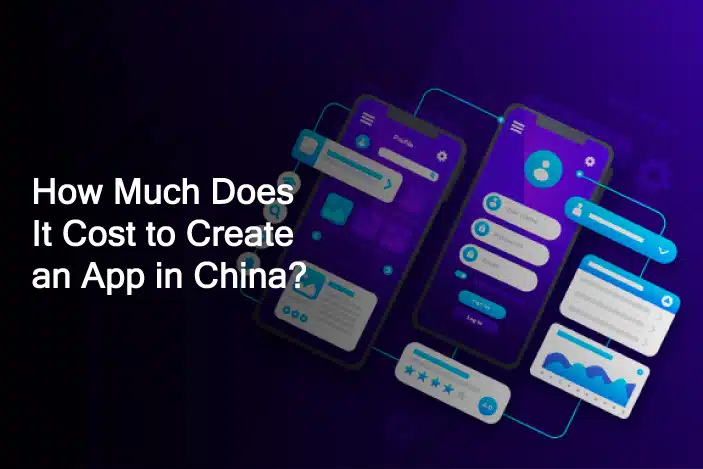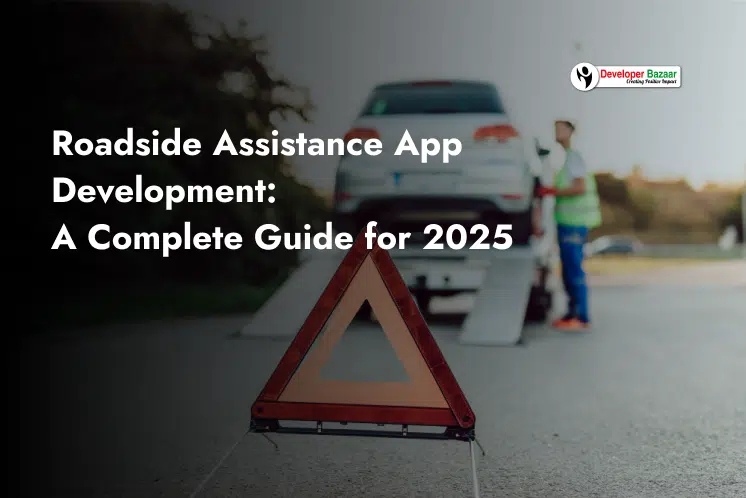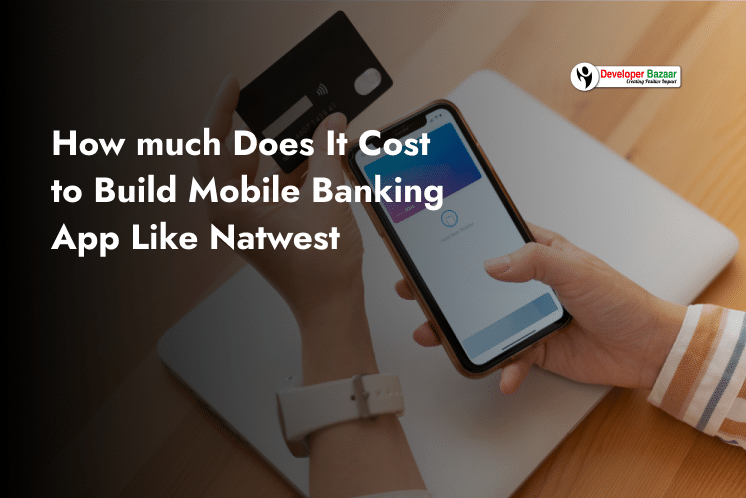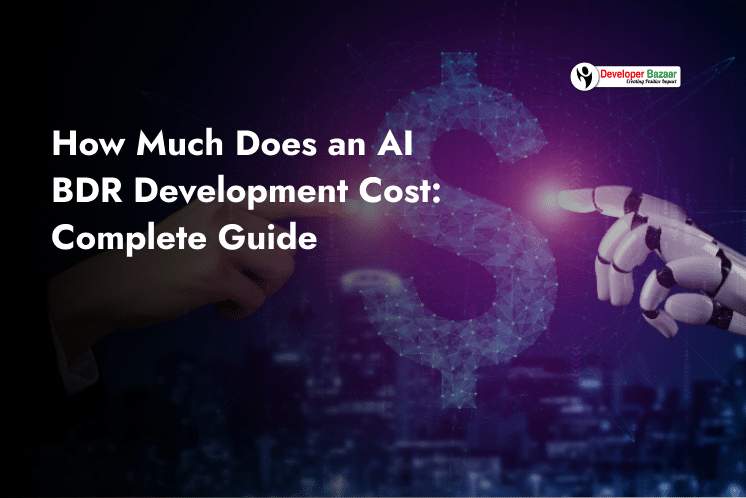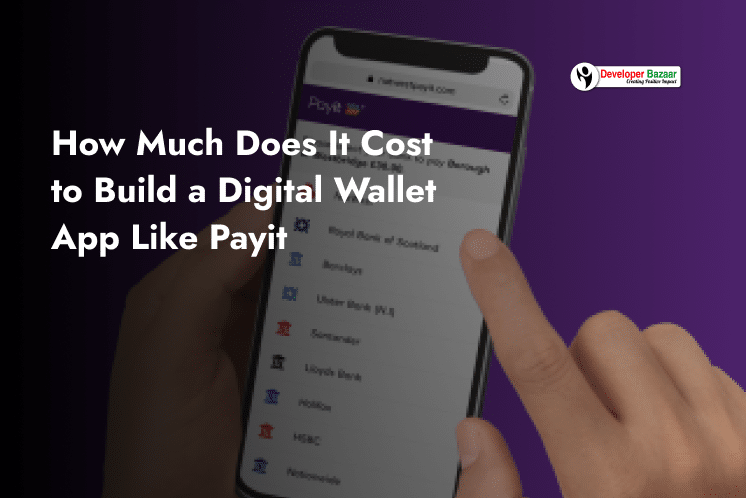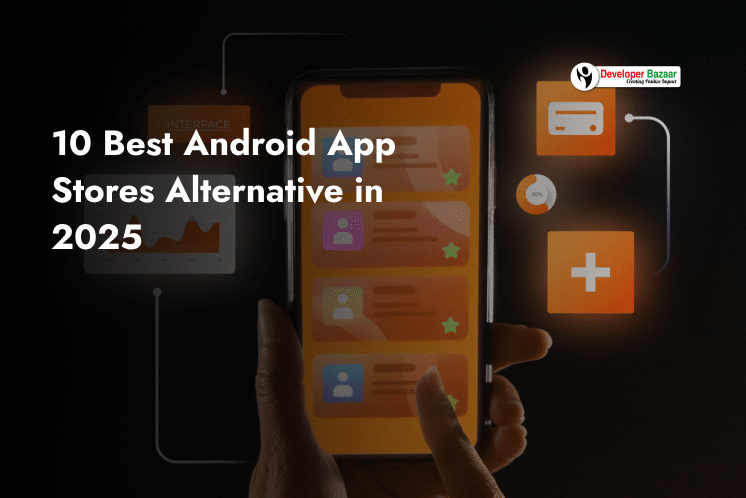Table of Contents
ToggleCreating an app in China can be a smart move because of its large and active market. With a population of over 1.4 billion and a huge number of internet users, China offers great opportunities for app developers and businesses.
China will have 1.05 billion internet users by 2024, many of whom will use mobile apps on a daily basis. The potential for app success can be seen by the approximately $77 billion generated by the Chinese mobile app market in 2023.
For effective planning, it’s important to understand how much it costs to create an app in China. These costs include development, design, testing, quality assurance, maintenance, and other factors like localization and following local rules. This blog will explain each cost in detail to help you budget properly.
Average Cost to Build an App in China
The cost of building an app in China can change a lot depending on how complicated the app is and what kind of app it is. Here’s a simple look at the average costs:
| App Complexity | Development Cost Range | Total Cost Range |
|---|---|---|
| Simple | $5,000 - $15,000 | $5,000 - $20,000 |
| Medium | $15,000 - $30,000 | $15,000 - $35,000 |
| Complex | $30,000 - $50,000 | $30,000 - $65,000 |
The cost of building an app in China can change a lot depending on how complicated the app is and what kind of app it is. Here’s a simple look at the average costs:
Let’s explore each cost component in detail.
1. Development Costs
The development costs are the main cost of creating an app. This cost fluctuates greatly in China based on several factors. These include the app’s complexity, platform compatibility (iOS, Android, or both), the development team’s location, and the techniques they use.
To help you better understand what to expect, we will go over each of these factors in detail.
Complexity and Features
The difficulty level of your app is the main factor that affects how much it will cost to develop. Let’s divide this into three types: simple apps, medium complexity apps, and complex apps.
Simple Apps:
➥ Description: These are simple apps that can do just a few things. Examples are basic calculators, simple to-do lists, or apps that just give information.
➥ Typical Features: Basic UI elements, minimal data storage, no user login, no API integration.
➥ Estimated Cost: $5,000 – $20,000
Medium Complexity Apps:
➥ Description: These apps offer more functionality and may include features that require integration with external services. Examples include fitness tracking apps, e-commerce apps with basic shopping carts, or apps with user authentication.
➥ Typical Features: User authentication, data storage, push notifications, integration with third-party APIs, payment processing.
➥ Estimated Cost: $15,000 – $35,000
Complex Apps:
➥ Description: These are advanced applications with numerous features and high complexity. Examples include social media apps, advanced e-commerce platforms, or apps with real-time functionalities like Uber.
➥ Typical Features: Real-time user interaction, extensive server-side logic, advanced database management, integration with multiple third-party services, high-level security features, multimedia processing.
➥ Estimated Cost: $30,000 – $65,000
Platform Choice
iOS Development:
➥ Description: Building for iOS is sometimes easier because Apple devices are more consistent.
➥ Pros: Higher user engagement, easier development due to fewer device types.
➥ Cons: Stricter App Store rules can increase quality assurance costs.
➥ Estimated Cost: Similar to Android for simple apps, but possibly higher for complex apps due to quality assurance.
Android Development:
➥ Description: Building for Android is more complex because there are many different devices and OS versions.
➥ Pros: Larger user base, especially in developing countries.
➥ Cons: Requires more testing to ensure it works on all devices.
➥ Estimated Cost: Similar to iOS for simple apps, but possibly higher for complex apps due to extensive testing.
Both Platforms (Cross-Platform Development):
➥ Description: You can develop for both platforms either by creating separate apps or using cross-platform tools like React Native or Flutter.
➥ Pros: Reaches more users, single codebase with cross-platform tools.
➥ Cons: Higher initial costs, harder to maintain one codebase for different platform needs.
➥ Estimated Cost: Usually higher because of the need for separate development or strong cross-platform solutions.
Development Cost Breakdown
| Complexity Level | iOS Only | Android Only | Both Platforms | Additional Costs |
|---|---|---|---|---|
| Simple | $5,000 - $10,000 | $5,000 - $10,000 | $10,000 - $20,000 | $5,000 - $10,000 (Project Management, Prototyping, Legal) |
| Medium | $20,000 - $30,000 | $20,000 - $30,000 | $30,000 - $50,000 | $5,000 - $15,000 (Project Management, Prototyping, Legal) |
| Complex | $30,000 - $50,000 | $30,000 - $50,000 | $50,000 - $70,000 | $10,000 - $20,000 (Project Management, Prototyping, Legal) |
2. Design Costs
Basic Design:
➥ Simple layouts
➥ Minimalistic design
➥ Estimated Cost: $1,000 – $3,000
Intermediate Design:
➥ Custom layouts
➥ User flow optimization
➥ Basic animations
➥ Estimated Cost: $3,000 – $5,000
Advanced Design:
➥ Highly customized and unique UI
➥ Complex animations
➥ User research and testing
➥ Estimated Cost: $5,000 – $7,000
Design Cost Breakdown
| Design Level | Estimated Cost |
|---|---|
| Basic | $1,000 - $3,000 |
| Intermediate | $3,000 - $5,000 |
| Advanced | $5,000 - $7,000 |
3. Testing and Quality Assurance (QA)
Making sure the app works well on every type of phone and in every situation is really important, especially because there are so many different kinds of Android phones being used in China.
Types of Testing
Manual Testing:
➥ Human testers execute test cases manually.
➥ Suitable for UI/UX and user acceptance testing.
Automated Testing:
➥ Automated tools execute test scripts
➥ Suitable for regression and load testing
Estimated Cost:
➥ Manual Testing: $1,000 – $3,000
➥ Automated Testing: $3,000 – $7,000
QA Cost Breakdown
| Testing Type | Estimated Cost |
|---|---|
| Manual Testing | $1,000 - $3,000 |
| Automated Testing | $3,000 - $7,000 |
4. Maintenance Costs
After a product is released, it’s really important to keep updating it. This means fixing any problems, adding cool new stuff, and making sure it works with the latest computer or phone systems.
Regular Updates:
➥ Bug fixes
➥ Performance improvements
New Features:
➥ Adding new functionalities
➥ Enhancing existing features
Estimated Cost: $5,000 – $10,000 annually
Maintenance Cost Breakdown
| Maintenance Type | Estimated Annual Cost |
|---|---|
| Regular Updates | $5,000 - $10,000 |
| New Features | $10,000 - $15,000 |
5. Localization
Making the app suitable for Chinese users isn’t just about changing the language. It means adjusting how the app looks, what it says, and how it works to fit what Chinese people like and what the rules are there.
Localization Aspects
Language Translation:
➥ Professional translation services
Cultural Adaptation:
➥ Adjusting content to fit cultural norms
Technical Localization:
➥ Ensuring the app works with local services and APIs
Estimated Cost: $2,000 – $8,000
Localization Cost Breakdown
| Localization Aspect | Estimated Cost |
|---|---|
| Language Translation | $1,000 - $5,000 |
| Cultural Adaptation | $1,000 - $5,000 |
| Technical Localization | $1,000 - $5,000 |
6. Compliance with Local Regulations
In China, there are strict rules and laws about the internet. If an app wants to be used and sold there, it must follow these rules.
Key Compliance Requirements
ICP License:
➥ Internet Content Provider license required for websites and apps
Data Privacy Laws:
➥ Compliance with China’s data protection regulations
App Store Regulations:
➥ Meeting the requirements of Chinese app stores like Tencent MyApp, Huawei AppGallery
Compliance Cost Breakdown
| Compliance Requirement | Estimated Cost |
|---|---|
| ICP License | $1,000 - $5,000 |
| Data Privacy Compliance | $500 - $3,000 |
| App Store Regulations | $500 - $2,000 |
7. Additional Considerations
Launching an app in China requires a well-planned marketing strategy to reach the target audience.
Marketing Channels:
➥ WeChat, Weibo, Douyin (TikTok), Baidu SEO
Estimated Cost: $5,000 – $10,000
Cloud Hosting and Servers
Choosing the right cloud service provider is crucial for app performance and compliance.
Providers:
➥ Alibaba Cloud, Tencent Cloud
Estimated Cost: $1,000 – $5,000 annually
Support and Customer Service
Providing customer support in local language enhances user satisfaction.
Estimated Cost: $2,000 – $8,000 annually
Total Estimated Cost
Based on what we just talked about, let’s list out how much money it might cost to make an app in China.
Total Cost Breakdown
| Cost Component | Minimum Cost | Maximum Cost |
|---|---|---|
| Development (Simple) | $5,000 | $20,000 |
| Development (Medium) | $20,000 | $50,000 |
| Development (Complex) | $50,000 | $150,000+ |
| Design (Basic) | $1,000 | $5,000 |
| Design (Intermediate) | $5,000 | $15,000 |
| Design (Advanced) | $15,000 | $40,000+ |
| Testing (Manual) | $2,000 | $10,000 |
| Testing (Automated) | $5,000 | $20,000 |
| Maintenance (Regular) | $5,000 | $10,000 |
| Maintenance (New Features) | $10,000 | $20,000 |
| Localization | $3,000 | $15,000 |
| Compliance | $2,000 | $10,000 |
| Marketing | $5,000 | $50,000 |
| Cloud Hosting | $1,000 | $10,000 |
| Support | $2,000 | $10,000 |
Example Scenarios
Scenario 1: Simple App with Basic Design and Manual Testing
| Cost Component | Estimated Cost |
|---|---|
| Development (Simple) | $10,000 |
| Design (Basic) | $3,000 |
| Testing (Manual) | $4,000 |
| Maintenance (Regular) | $5,000 |
| Localization | $5,000 |
| Compliance | $3,000 |
| Marketing | $10,000 |
| Cloud Hosting | $2,000 |
| Support | $3,000 |
| Total | $45,000 |
Scenario 2: Medium Complexity App with Intermediate Design and Automated Testing
| Cost Component | Estimated Cost |
|---|---|
| Development (Medium) | $35,000 |
| Design (Intermediate) | $10,000 |
| Testing (Automated) | $10,000 |
| Maintenance (New Features) | $15,000 |
| Localization | $8,000 |
| Compliance | $5,000 |
| Marketing | $20,000 |
| Cloud Hosting | $5,000 |
| Support | $6,000 |
| Total | $114,000 |
Scenario 3: Complex App with Advanced Design and Comprehensive Testing
| Cost Component | Estimated Cost |
|---|---|
| Development (Complex) | $100,000 |
| Design (Advanced) | $30,000 |
| Testing (Automated) | $15,000 |
| Maintenance (New Features) | $20,000 |
| Localization | $15,000 |
| Compliance | $10,000 |
| Marketing | $50,000 |
| Cloud Hosting | $10,000 |
| Support | $10,000 |
| Total | $260,000 |
Strategies to Reduce Mobile App Development Costs in China
In China, developing a mobile application can be expensive, but there are ways to cut costs without sacrificing the quality or functionality of the app. While creating a mobile app for Chinese users, consider the following helpful cost-saving strategies:
1. Define Clear Requirements and Scope
➥ Strategy: Before you begin making your app, make sure you clearly understand what you need and how big your project will be.
➥ Impact: This helps prevent your project from growing bigger than planned or adding extra features that aren’t needed, which saves money during development.
➥ Implementation: To do this, study your market well, imagine who will use your app, and list exactly what your app should do in its first version.
2. Choose the Right Development Approach
➥ Plan: Choose how to build your app based on how complex it is and who will use it.
➥ Effect: Using frameworks that work on multiple platforms or developing specifically for each platform can change how much it costs to make your app.
➥ Process: Think about the good and bad parts of frameworks like React Native or Flutter, which work on many platforms, versus making your app separately for each platform to get the best results.
3. Outsourcing vs. In-house Development
➥ Plan: Think about hiring outside help to save money if your team doesn’t have certain skills or if labor is cheaper in different parts of China.
➥ Effect: Outsourcing can save money on salaries, office space, and hiring compared to keeping your own team.
➥ How to do it: Choose outsourcing partners carefully by looking at their work, skills, and how well they communicate to make sure you work well together.
4. Agile Development Methodology
➥ Strategy: Use Agile methods to work faster, focus on important features, and adjust to new needs easily.
➥ Impact: Makes development faster, cuts down on redoing work, and gets products to market faster, which might save money overall.
➥ Implementation: Start using Agile ways like short work periods, daily meetings, and regular feedback to make development smoother and help teams work better together.
5. Optimize Design and User Experience (UI/UX)
➥ Approach: Use a design method that focuses on what users need. This helps cut down on how many times we have to change the design and makes sure the interfaces are easy for users to understand.
➥ Result: Saves time and money by avoiding the need to redo and improve interfaces after they’ve been made.
➥ How to do it: Test the design with users and get their thoughts early on. This helps us make sure the design choices are right and lets us improve things based on what users say.
6. Use Open-Source Technologies and Libraries
➥ Strategy: Use free technologies and tools that anyone can use to make building the basics of your app faster and cheaper.
➥ Impact: Saves time because you don’t have to create everything from nothing. Developers can then concentrate on making your app special and connecting all its parts.
➥ Implementation: Find good tools that are free and match what your app needs. Make sure they work well with your app and are safe to use.
7. Minimize Third-Party Integrations
➥ Strategy: Use only the most important third-party services to make development simpler and avoid problems with compatibility.
➥ Impact: Makes it easier and cheaper to develop and maintain apps, and ensures they run smoothly without relying too much on outside services.
➥ Implementation: Focus on integrating crucial services like payment systems or tools for understanding user behavior, which improve how the app works and how users enjoy it.
8. Continuous Testing and Quality Assurance (QA)
➥ Strategy: Use both automatic and hands-on testing to find and fix problems early when making new software.
➥ Impact: Saves money on fixing mistakes and makes the app better by catching problems before users notice them.
➥ Implementation: Add automatic testing tools to your development process and regularly check how well the app works on different devices and situations.
9. Plan for Scalability and Future Updates
➥ Strategy: Plan and build the app so it can grow easily and be updated smoothly in the future.
➥ Impact: Reduces the expenses and problems of big app changes when more users join or new features are needed.
➥ Implementation: Use flexible ways of coding, cloud services that can grow, and a design that lets us add things easily later on.
10. Monitor and Optimize Operational Costs
➥ Strategy: Always keep an eye on how well your app is doing and how much it costs to run it, including hosting, storing data, and using outside services.
➥ Impact: This helps find ways to save money and use resources better by looking at how people use the app and what they say about it.
➥ Implementation: Use tools that analyze data and keep track of how well your app runs on the internet. This helps find problems and use resources like servers more effectively.
By using these plans, you can control and lower the costs of making mobile apps in China. This will help ensure your app is what users want and expect.
Each plan should be adjusted to fit your project and business goals. This way, you can launch your app successfully and affordably in the fast-changing Chinese market.
FAQs
Q. How much does it cost to Create an app in China?
Creating an app in China can be cheap or expensive. Simple apps may cost $5,000 to $20,000. Complex or special apps can cost $30,000 to $65,000 or even more. It depends on what the app needs and how good you want it to be.
Q. How long does it take to build an app in China?
Building an app in China takes time, and it depends on how complicated the app is and what it needs to do. A basic app might take 2-3 months to finish. But if the app is more advanced and does a lot of things, it could take anywhere from 6 months to a year or even longer.
Q. What are the business benefits of mobile app development in China?
Developing mobile apps in China lets you reach a huge number of smartphone users. This helps you connect directly with consumers, make your brand more well-known, and create specific marketing plans. It also encourages new ideas because of the variety of apps available, and gives you chances to earn money through purchases in apps and advertising.
Q. How much does it cost to maintain an app in China?
Maintaining an app in China costs different amounts depending on how complex it is, how often it gets updated, how much it costs to run the servers, and whether it follows all the rules. For smaller apps, it could be anywhere from $10,000 to $50,000 each year. Bigger and more complicated apps can cost a lot more.
